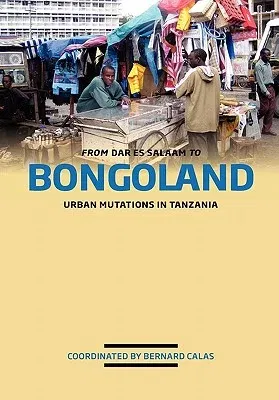The name Dar es Salaam comes from the Arabic phrase meaning house of
peace. A popular but erroneous translation is "haven of peace" resulting
from a mix-up of the Arabic words "dar" (house) and "bandar" (harbour).
Named in 1867 by the Sultan of Zanzibar, the town has for a long time
benefitted from a reputation of being a place of tranquility. The
tropical drowsiness is a comfort to the socialist poverty and
under-equipment that causes an unending anxiety to reign over the town.
Today, for the Tanzanian, the town has become Bongoland, that is, a
place where survival is a matter of cunning and intelligence (bongo
means "brain" in Kiswahili). Far from being an anecdote, this slide into
toponomy records the mutations that affect the links that Tanzanians
maintain with their principal city and the manner in which it represents
them. This book takes into account the changes by departing from the
hypothesis that they reveal a process of territorialisation. What are
the processes-envisaged as spatial investments-which, by producing
exclusivity, demarcations and exclusions, fragment the urban space and
its social fabric? Do the practices and discussions of the urban
dwellers construct limited spaces, appropriated, identified and managed
by communities (in other words, territories)? Dar es Salaam is often
described as a diversified, relatively homogenous and integrating place.
However, is it not more appropriate to describe it as fragmented? As
territorialisation can only occur through frequenting, management and
localised investment, it is therefore through certain places-first
shelter and residential area, then the school, daladala station, the
fire hydrant and the quays-that the town is observed. This led to broach
the question in the geographical sense of urban policy carried out since
German colonisation to date. At the same time, the analysis of these
developments allows for an evaluation of the role of the urban crisis
and the responses it brings. In sum, the aim of this approach is to
measure the impact of the uniqueness of the place on the current
changes. On one hand, this is linked to its long-term insertion in the
Swahili civilisation, and on the other, to its colonisation by Germany
and later Britain and finally, to the singularity of the post-colonial
path. This latter is marked by an alternation of Ujamaa with Structural
Adjustment Plans applied since 1987. How does this remarkable political
culture take part in the emerging city today? This book is a translation
of De Dar es Salaam a Bongoland: Mutations urbaines en Tanzanie,
published by Karthala, Paris in 2006.


